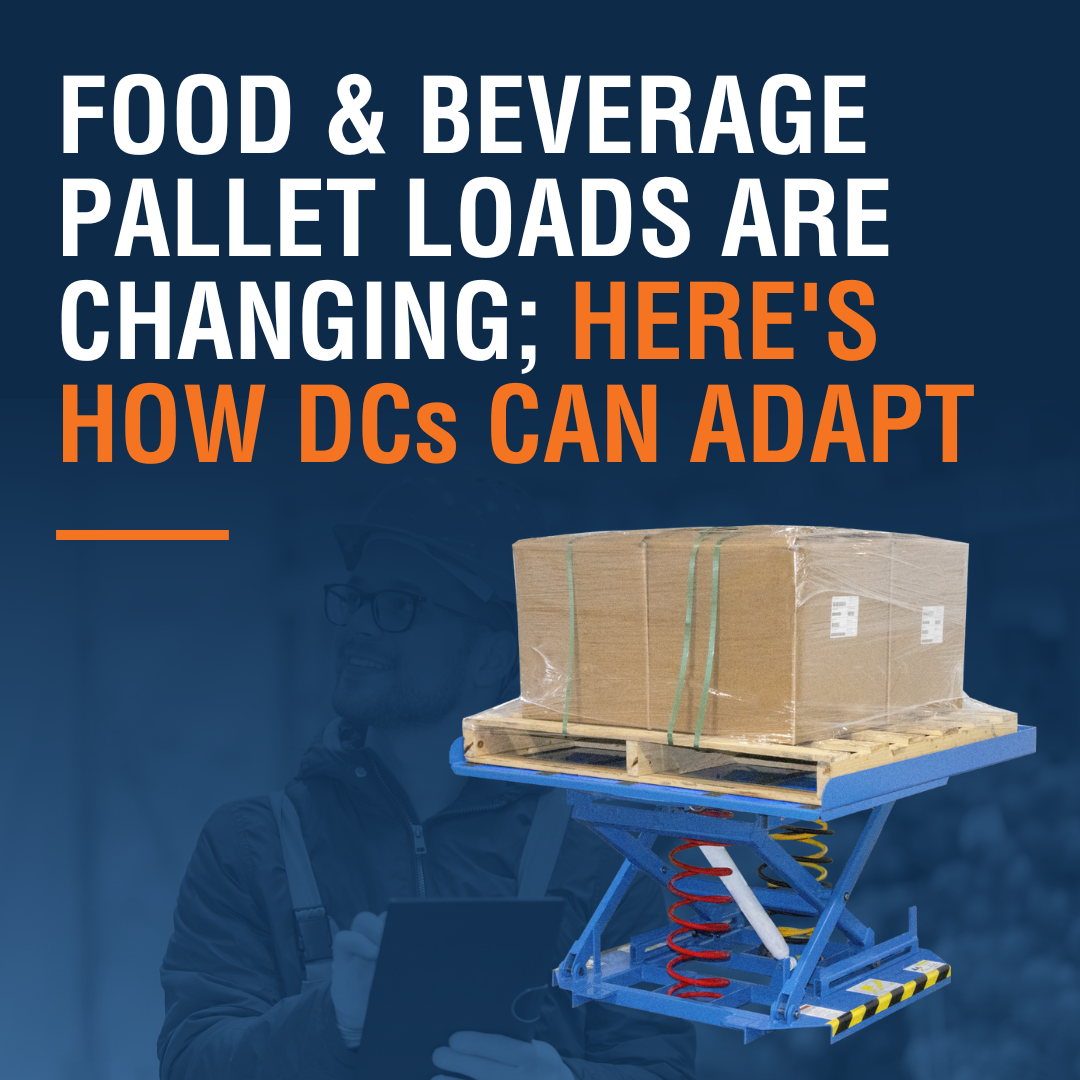We use cookies to make your experience better. To comply with the new e-Privacy directive, we need to ask for your consent to set the cookies. Learn more.
Food and Beverage Pallet Loads Are Changing; Here's How DCs Can Adapt
Supply chain disruption wasn’t just a pandemic phenomenon, as it turns out. As the world transitions to its new, post(ish)-pandemic normal, grocery leaders continue to worry about keeping food on the shelves. In fact, the industry’s concern has only grown as the pandemic has receded. 
According to a 2022 report from tech firm Avnet, grocery chain executives fretted over supply chains in an increasing number of earnings calls between 2020 and 2022. The first year of the pandemic, 90% of grocery-industry earnings calls included discussion of supply chain woes. In 2021, that figure was 95%. By 2022, every single earnings call addressed concern over the food and beverage supply chain: 100%.
One reverberation of this new normal is changing workflows for grocery distribution centers. Manufacturers used to ship full, single-SKU food pallet loads to a grocery firm’s DCs. But to save on already-thin margins — and to build shipments amid surprise shortages — grocery chains are insisting on more mixed pallets. That seemingly small complexity can lead to delays for outbound manufacturing shippers and DCs slow to adapt. Those delays exacerbate the challenge of moving products from DCs to stores, and ultimately onto the consumer’s plate.
Modern Materials Handling has the figures on this shift. According to the industry publication, shipments from manufacturers to DCs now consist of:
- 60% single-SKU pallets
- 30% mixed-SKU pallets
- 10% loose case units
So how can DCs adapt to this added complexity at the unit level? Here are a few suggestions.
Improving Pallet Handling with Mixed Food and Beverage Pallets
As you might expect, technology offers an effective way to handle mixed-SKU pallets. Robotic palletizers and depalletizers ease the labor burden — and the burden on labor. When workers unpack a mixed pallet, they must often route each SKU to a different location. That leads to more repetitive motion, an ergonomic risk factor that can lead to musculoskeletal disorders.
But robots alone aren’t a full solution. To automate the building of mixed pallets, you need advanced software that can calculate what makes a stable stack. To break pallets down, software must recognize each unit, and route it to the appropriate location. That could require artificial intelligence, like machine vision that sorts units based on size, shape, and weight, and more. At the very least, it will require an organized database, scanners, and identifiers like barcodes.
These systems are expensive, to say the least. They also take time to implement. What can the struggling grocery DC do to simplify mixed pallet handling today?
Boosting Throughput in Manual Food Palletizing and Depalletizing
The first place to look is the palletizing (or depalletizing) station. Building or breaking down any food or beverage pallet — single- or mixed-SKU — requires 360-degree access. But mixed pallet loads require more effort. Employees must work with differently sized containers, and place them in the exact right location, either on the stack (when palletizing) or on conveyors or carts (when depalletizing).
All that extra effort adds up to extra time — and more ergonomic risk. If it’s not feasible to automate the entire process immediately, the simple fix is to change the work. Instead of making workers move around the pallet, let the pallet move to them. Rotating, self-leveling pallet tables are a relatively low-cost way to simplify pallet work in the food and beverage industry, from the manufacturer to the DC to the grocery store. They’ll help DCs adapt to more mixed pallets instantly, and they can be installed in an afternoon.
The Pallet Carousel and Skid Positioner from BHS positions loads at an ergonomic height. As units are added or removed from the pallet, the self-leveling surface adjusts to keep that height the same: No more stooping, bending, or reaching. Meanwhile, the rotating tabletop allows a single worker to reach every corner of the pallet without constantly shifting position. It’s a faster, safer way to work with mixed pallet loads — which appear to be the new normal in the food and beverage industry.
Of course, there’s no telling how grocery supply chains will change in the months and years to come. The best way to adapt to uncertainty is to enhance safety and productivity today. Self-leveling, rotating pallet stations provide the benefits that keep DCs resilient, no matter how food and beverage pallet loads adjust to meet ever-changing conditions.
Learn more about the Pallet Carousel and Skid Positioner from BHS, Inc.
